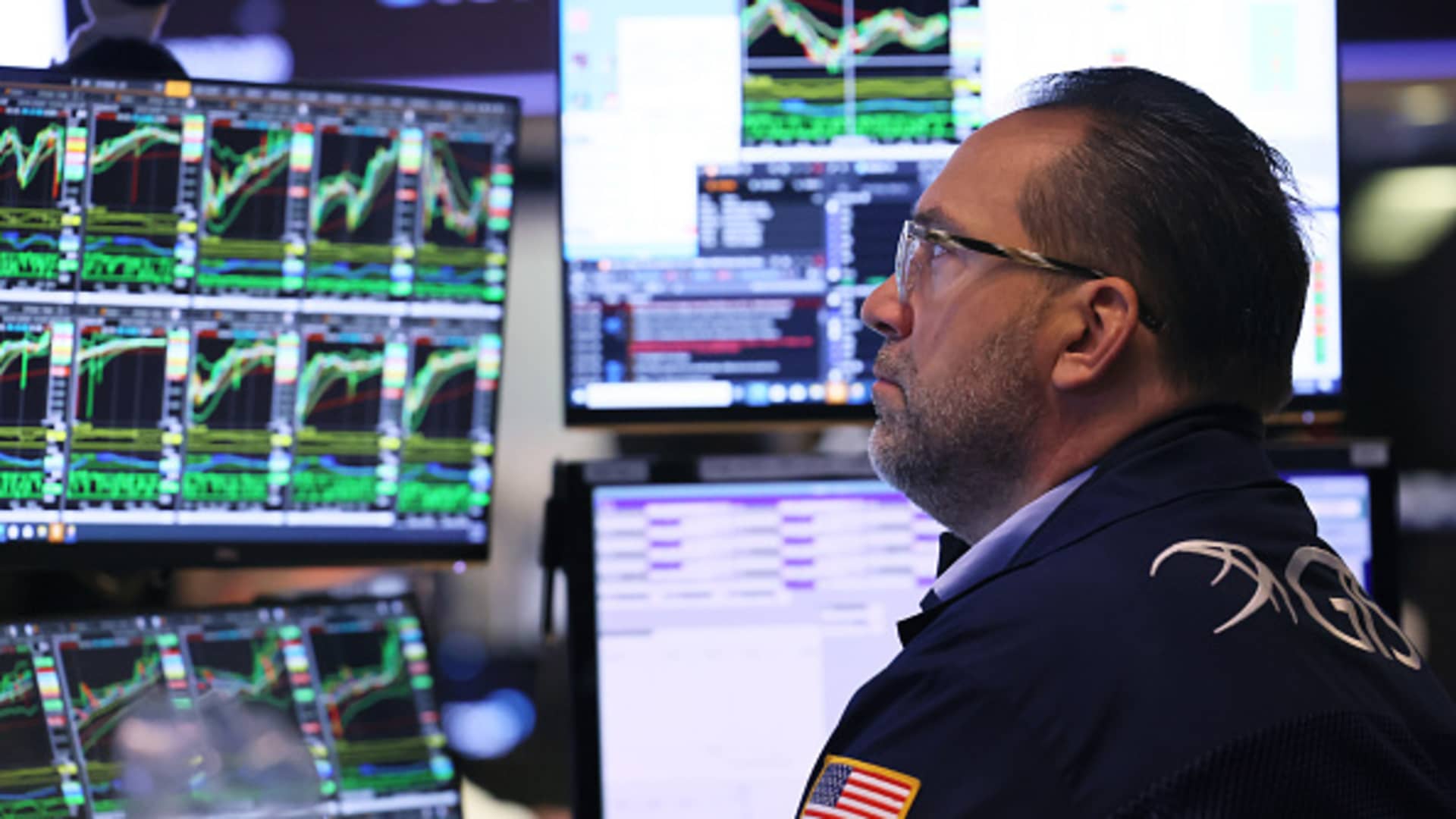
After a strong start to the year, U.S. stocks were brought back to reality in February, as the major U.S. indexes posted their second negative month in three. The Dow Jones Industrial Average , S & P 500 , and Nasdaq Composite all saw declines in February. And while March is often a positive month for stocks, this year it may bring yet more turbulence as sticky inflation, a potential recession, and fears of a regulatory crackdown in China linger. Top of mind, however, is undoubtedly the path of interest rate hikes, with market pros nervously looking to the Federal Reserve’s next rate decision on Mar. 22 amid growing expectations that more interest rate hikes could be in store. The Fed in February raised the federal funds rate by 0.25 percentage points , taking it to a target range of 4.5%-4.75%, the highest since October 2007. Alexander Morris, chief investment officer at F/m Investments, said the Fed continues to “loom large,” while Michael Landsberg, chief investment officer at Landsberg Bennett Private Wealth Management, said he believes the Fed will raise rates by a further 75-to-100 basis points. Anastasia Amoroso, chief investment strategist at iCapital, believes the “biggest market risk” right now is the Fed raising the terminal rate to a range of 6% to 6.5%. “I think it’s possible that we might end the year with over 6% rates given persistent inflation pressures and the economy that seems to be absorbing 5% rates just fine,” she said in notes to CNBC on Friday. How to trade So where should investors put their money against this backdrop? One obvious area fixed income, with Ma Yung-Yu, chief investment strategist at BMO Wealth Management, calling the asset class a “welcome relief and benefit to the portfolio.” “We like short-term treasuries, and we like short-term corporate investment grade bonds. You are getting 5% [yield] on short-term treasuries, more than that on investment grade corporates, and it’s a pretty nice stable return that you can look for. We do think fixed income really has a meaningful place in portfolios now,” he told CNBC’s “Street Signs Asia” on Wednesday. Meanwhile, Amoroso said she is advising clients to use the valuation reset in private markets to add exposure. “With all the dry powder that’s on the sidelines, all the corporates have a lot of cash to deploy into strategic M & A,” she said. “What generates the best vintages for private equity? It’s times like these. It’s the downturn year.” David Dietze, managing principal at Peapack Private Wealth Management, believes investors should “stay the course” in stocks. He noted that stock prices are “off their highs” — and the market has never failed to rebound to new highs. It’s also “historically a better time to keep the faith” in times of negative market sentiment, he added. “It’s impossible to time the market. At some point the labor market will weaken, and that may well weaken the Fed’s resolve to keep hiking rates. There are lots of pockets of the market where valuations are not challenging,” Dietze said in notes to CNBC on Wednesday. Meanwhile, Jim Lydotes, portfolio manager of the BNY Mellon Global Infrastructure Income Fund, said investors should look for specific characteristics when investing in companies. “High equity income levels that provide some certainty of returns, very defensive business models that are detached from the economic cycle, and importantly, businesses that are able to take pricing higher to capture inflationary pressures,” he said.
